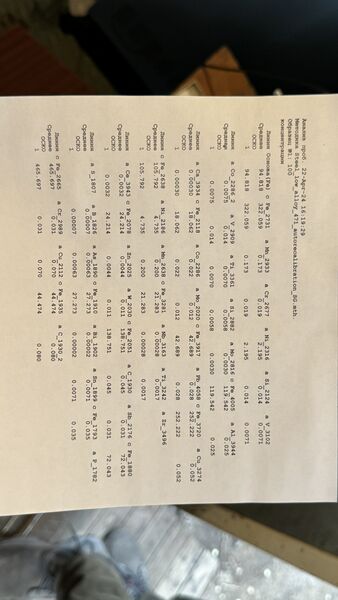Week 12. Molding and Casting¶
Molding and Casting week introduction¶
What I learned this week is a lot about molding and casting mostly with cast iron, also with other metals and plastic polymers. Thanks to Ashot, our Fab lab prior student, who perfectly completed this week’s instructing for us.
Each of us experienced with different materials in our group. And we’ve learnt a lot and successfully created interesting and beautiful things.
Cast iron bench¶
With the opportunity of using iron cast as casting material provided by our lab and Ashot’s metal factory, I decided to design and make a bench. Here are the steps of whole process.
- Design model
- Making the pattern
- CAM (milling the pattern from plywood and some 3D print parts)
- Preparing the pattern for molding (Prime and sanding)
- Making moulds
- Filling with cast iron
Design process¶
I started design and modeling of the bench in Blender. Used standart bench sizdimentions height of sitting platform 40, width 60 height of back 80, 5-15 degree angle for back, and 4-9 degree for seat.
At first I created the silhouette of bench on a plane with adding vertices. Then used Modifiers to form the 3D model.
Applied modifiers and started making draft angles.
Draft angles
It’s important thing for casting to have atleast minimal draft angles on the model for pulling out the pattern from the mould without destroying it.

Later I was offered by Ashot to add relief on the surface. For that the fastest way I could think of was transforming randomly selected vertices. I moved inside vertices in proportional editing mode.
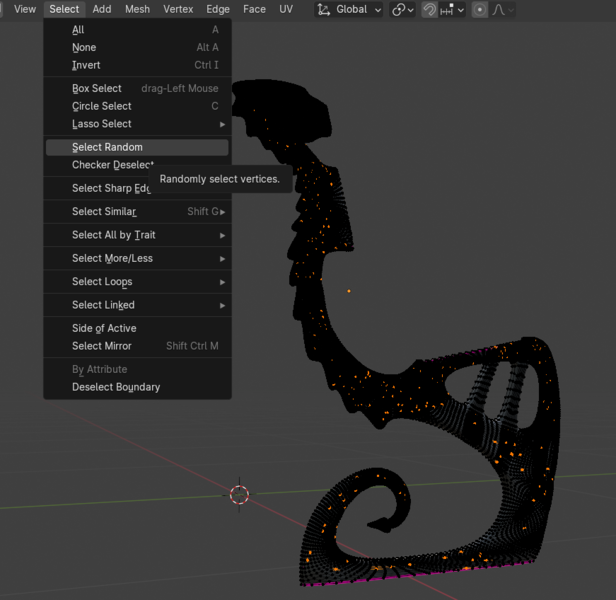

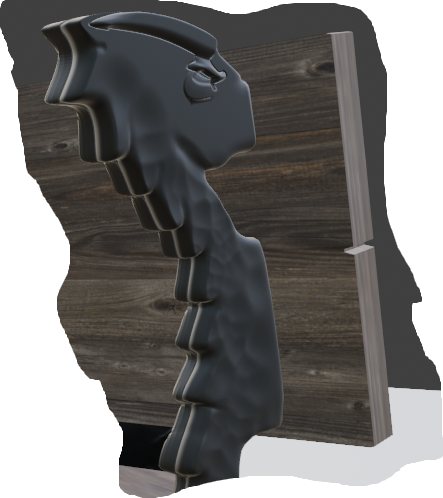 Separated the model into two parts for molding. Exported parts as STL from Blender.
Separated the model into two parts for molding. Exported parts as STL from Blender.



CAM¶
Manufacturing in Fusion 360.
Inserted STL files in Fusion 360. Insert > insert mesh.
Then arranged on the ground and made them fit into ShopBot’s bed sizes. Made the box same sized and width as the plywood I am going to cut. Then arranged holes for fixing material on the bed, avoiding screws for being interact with models.
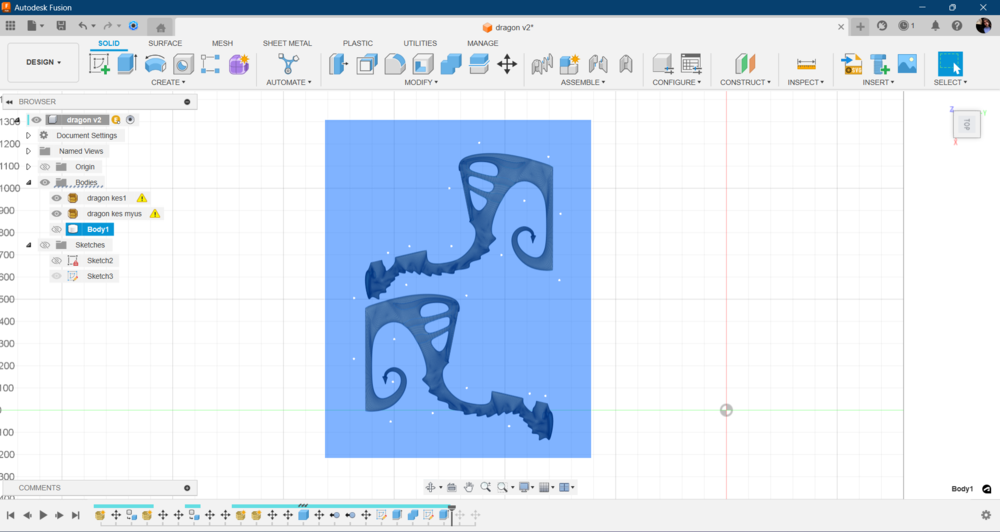
As some parts were thicker then my material so I used separate parts of plywood for thickening. Added boxes and joined them.
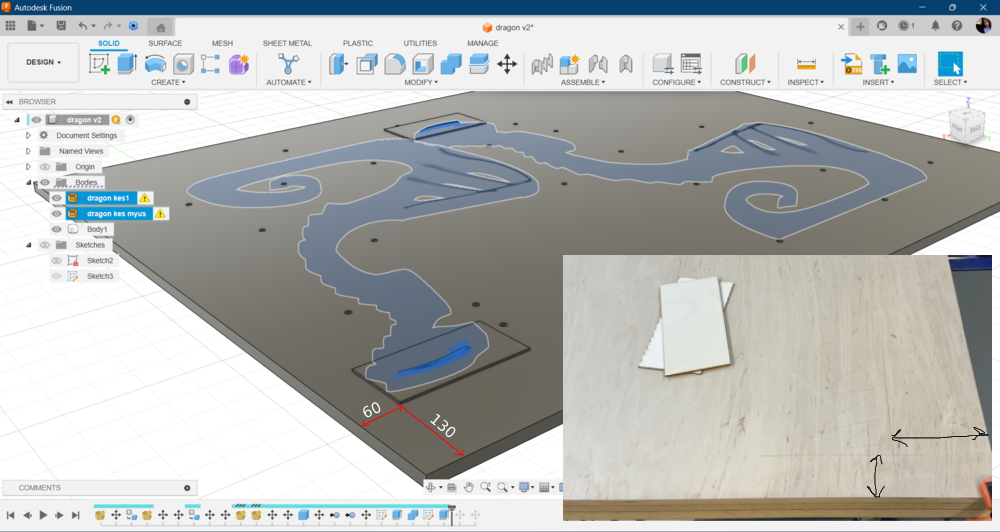
In this case in manufacturing setup I’m going to use stock mode from solid and select the joined body.
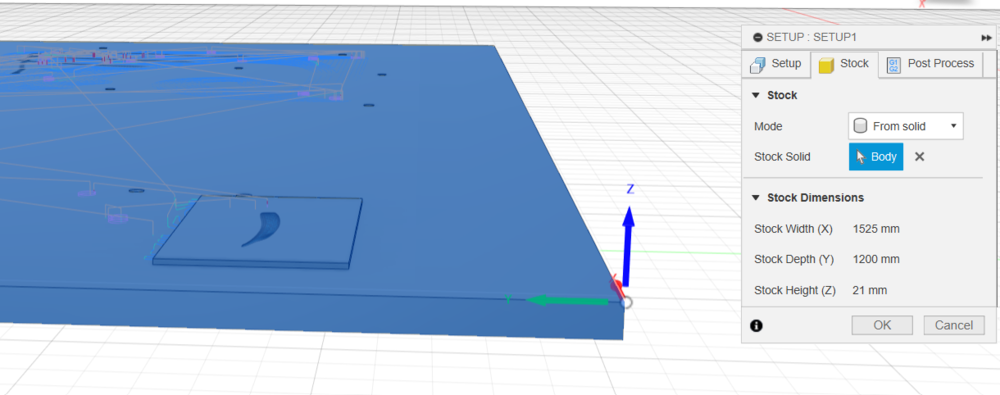
Milling toolpaths¶
here are steps of milling toolpath and generated g-codes
 For first step is good to drill holes to fix the plywood on the machine’s bed. Drilling with machine using the generated g code provides the opportunity to make holes in right places by avoiding model parts. It took about 20 minutes.
For first step is good to drill holes to fix the plywood on the machine’s bed. Drilling with machine using the generated g code provides the opportunity to make holes in right places by avoiding model parts. It took about 20 minutes.
toolpath for drilling with 3mm diameter drill I used.

Roughing is first step of clearing the material and making approximate contours which is pending final more precise clearing for next step. It can be done with bigger diameter tools for effective process.
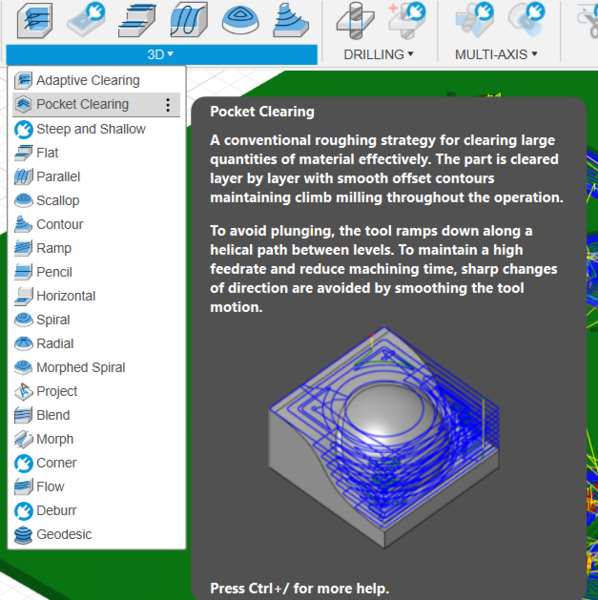
Tool preferences for 3D pocket I used 12 mm diameter flat end mill.
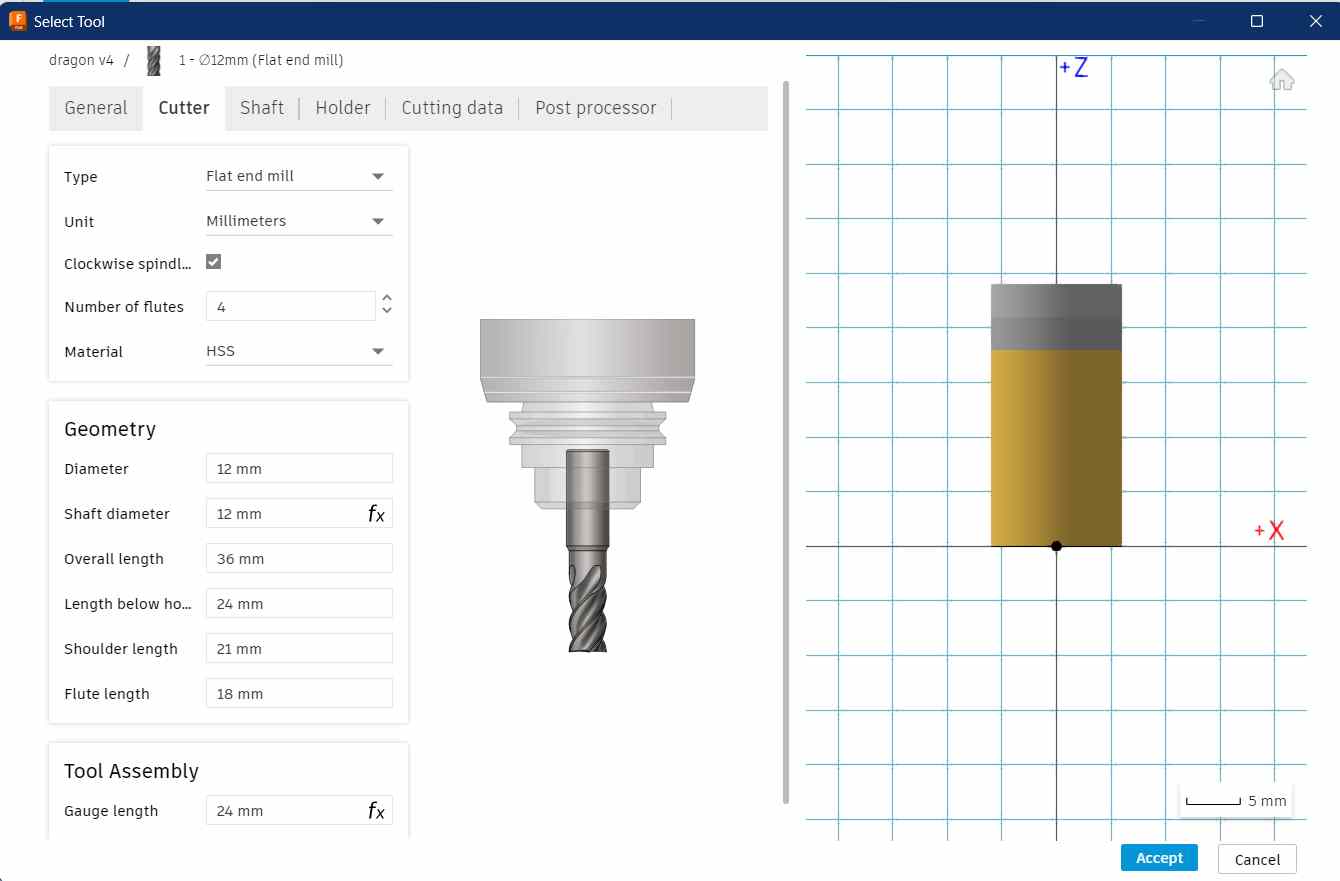
3D pocket toolpath preferences
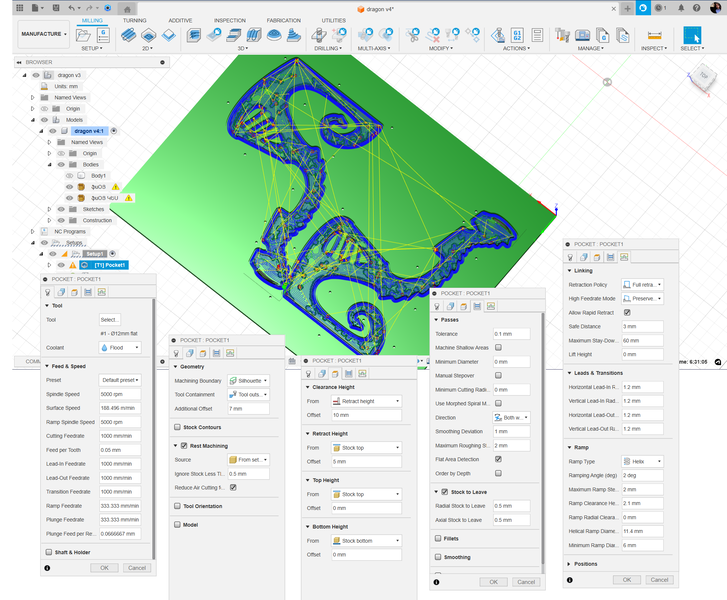
For finishing used toolpaths Parallel and Contour
Parallel clearing first, to smooth the reliefs.

6.35 mm diameter ball end mill for both finishing tools.
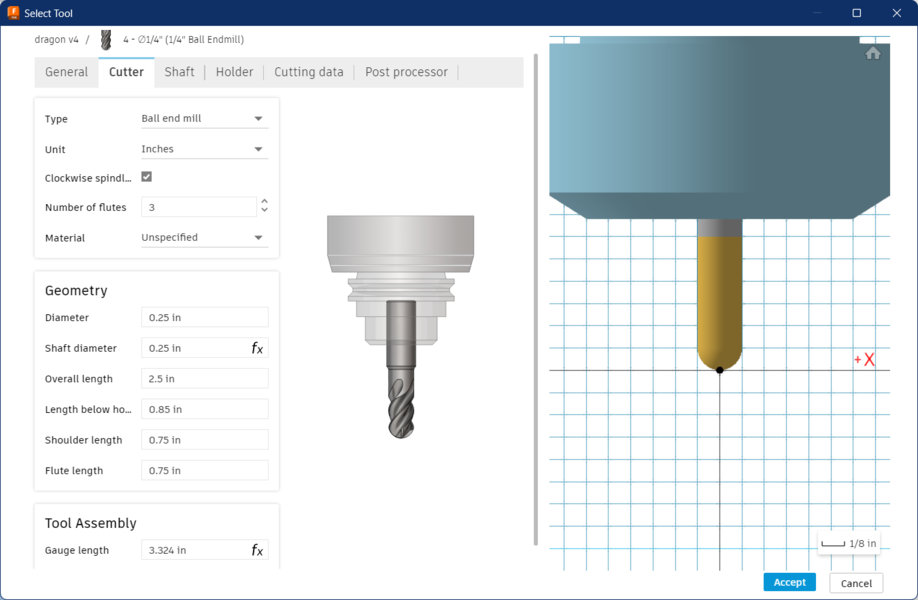

Contours

Files:
Milling the Pattern¶
Making ready the bed with extended parts. Used two-component super glue.

Fixing with screws in the milled holes.

Next, rough clearing, Pocket process. (11 hours)


We tried to avoid the model to be screwed but it was necessary. And eventually, we fixed directly models to the bed, to reduce the shakeing for safety.
And next finishing, parallel and contour. (6 hours)

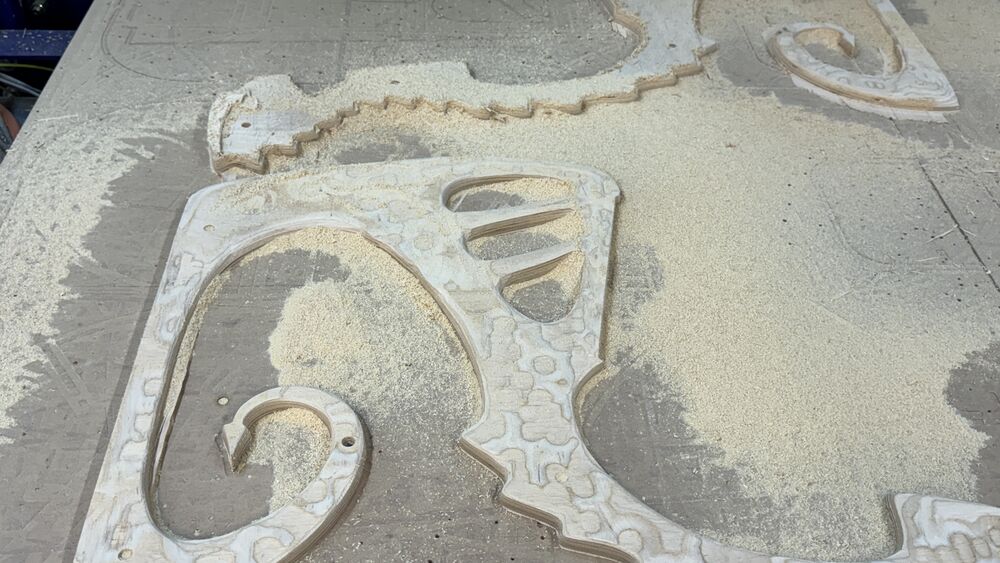
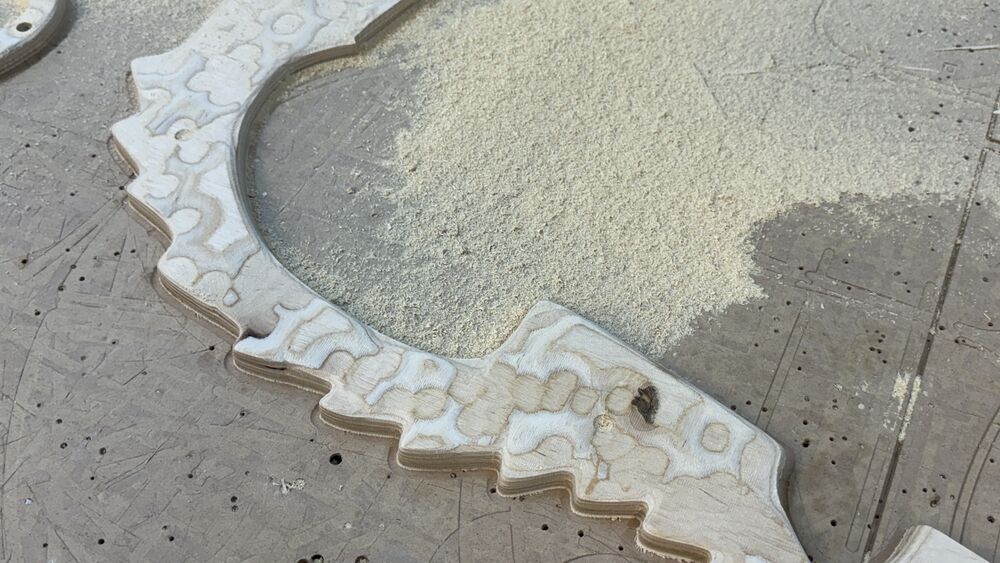
After finishing.
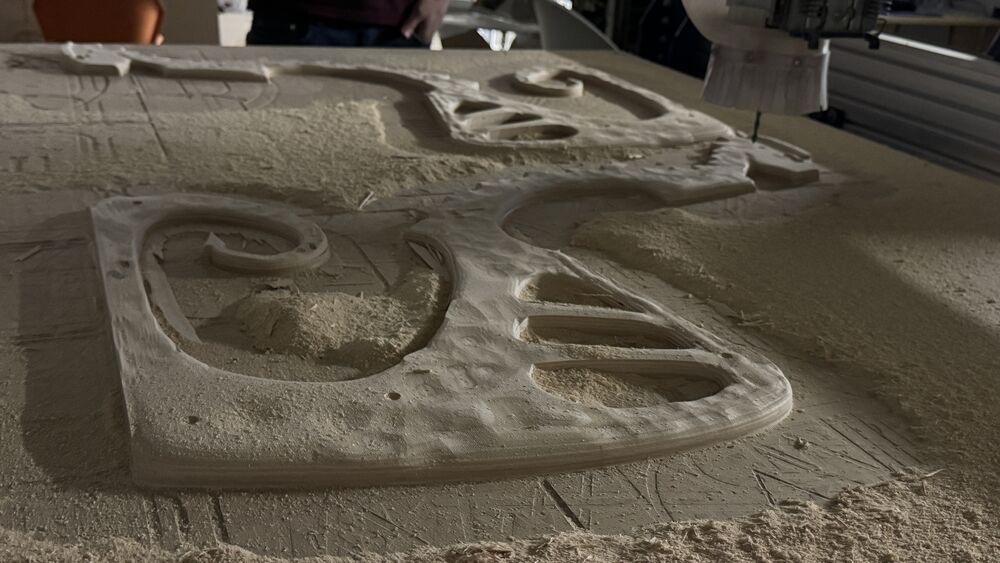
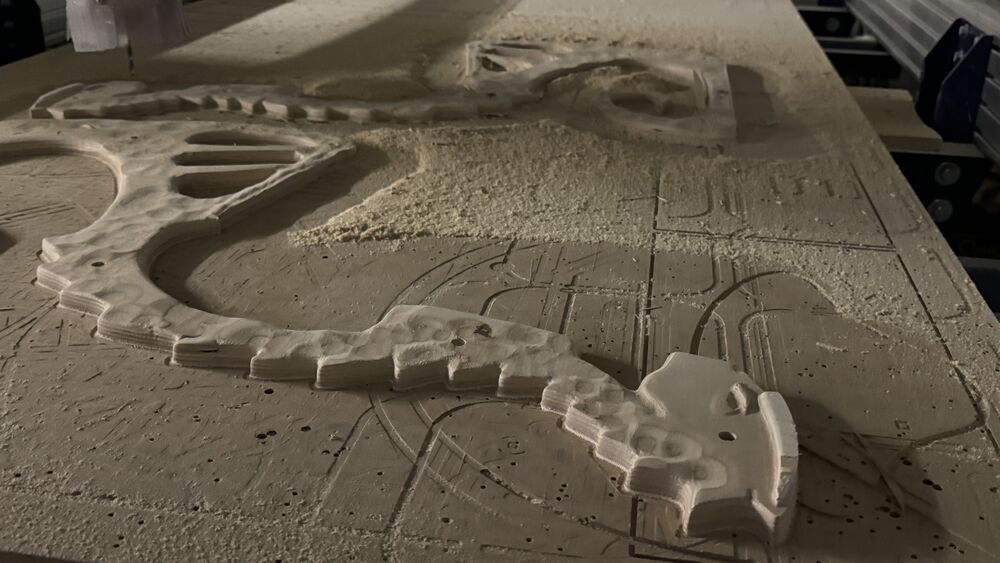
Models have to be post processed with sandpaper, primed and again sanded. For priming I used two component poliurethane primer. It’s for preventing wooden models be affected by wet.

And after that good sanding helped the model to fit out easily from the mould after.
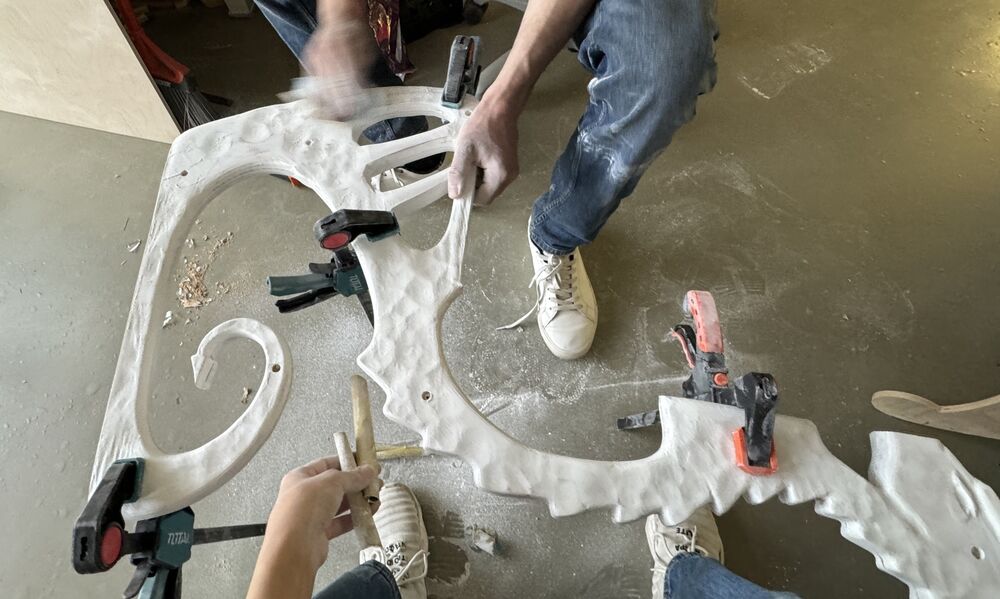
And for connecting two pars correctly, it’s needed to have guides, which we did with metalic parts and holes. One of the parts stucks in the wood and the other needs to came out easily.

Mold and cast¶
So then we were relocated to continue the work in Ashot’s factory.

Here is a video describing all the process of pouring cast iron in the factory.
First part of pattern placed on flat surface, and flask placed on the top of it.

Spreading grafite on the surface between model and the sand. Also placed tube for the metal be filled in.
After filling the sand, they are pressing it.
Then they took up the Flask and it’s good that model slight out from it.

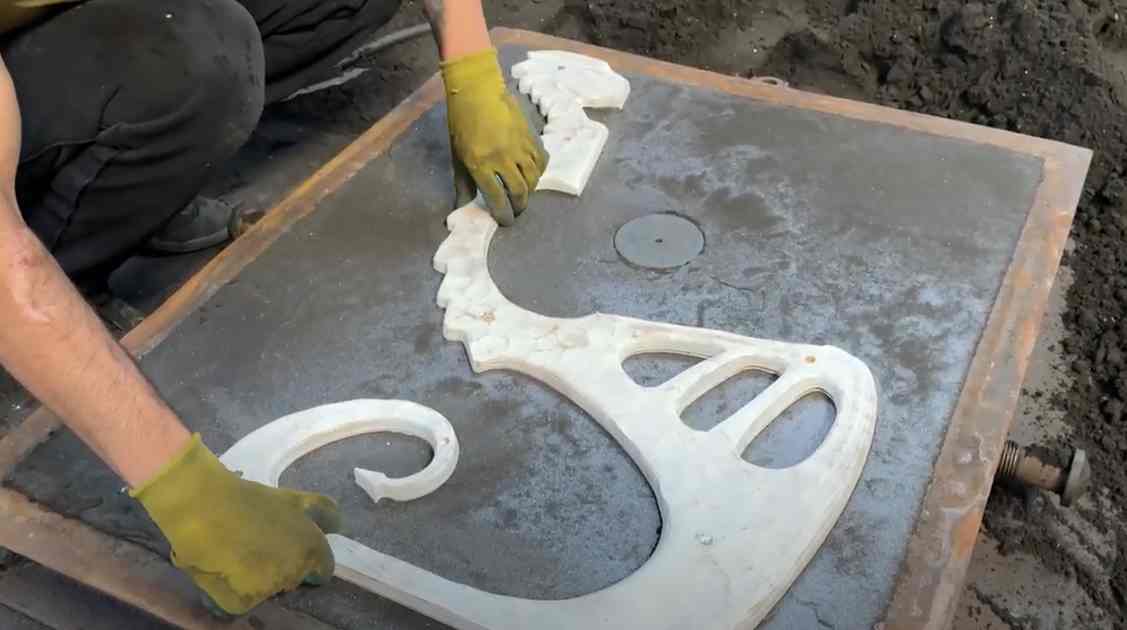
Other part of flask is being placed on the first and the same process of filling the grafite, sand and pressing.
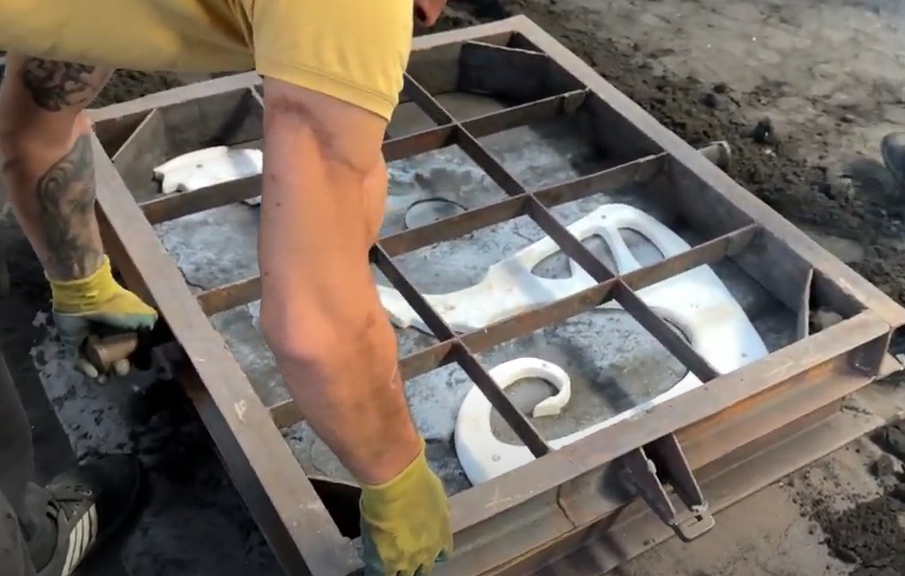
Specialists are pouring the melted metal through the vessel.
Finally taking out the casted parts.

It’s needed to be cleaned and trimmed.
laboratory¶
Aditionally, we were taken to a tour in the laboratory by Ashot. He showed us how they diagnose the material which is being used in the process of casting in the factory.

The machine is spectral analysis for metals. It works with libraries for each metal and detects the components in the metal composites.
We tried out the work of the machine with a 100 Dram coin.

